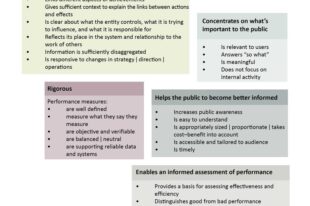Analysis of the development, follow-up and impact of recommendations on government auditing in Peru

Author: Arturo Alejandro ZEA MANRIQUE, Chief of the Institutional Control Organ of the Regional Government of Arequipa, Contraloría General de la República del Perú (SAI PERU)
Introduction
In Peru, there are three main types of control services in the governmental sphere: ex-ante, simultaneous and ex-post.
Ex-ante control is implemented before any financial disbursement is made. A clear example is the ex-ante authorization requested from the Office of the Comptroller for the payment of additional services in investment or construction projects.
Simultaneous control, on the other hand, is applied during the execution of the expenditure. This process is carried out at all stages of an investment project, from the initial planning and design, through the preparation of the technical dossier, to the execution and final closing of the project.
Finally, ex-post control is carried out once the expenditure has been executed. This stage comprises three key services: audits, specific control services and ex officio ex-post actions. Audits in particular are categorized into financial, compliance and performance audits.
These audits play a crucial role in verifying compliance with the applicable regulatory framework under the principle of legality. In addition, they are fundamental for communicating recommendations for the initiation of civil, criminal and/or administrative legal actions against the public officials responsible. Equally important is their ability to issue recommendations aimed at areas for improvement in public management, which facilitates the development of effective strategies to optimize public resources.
Recommendation Development Process
In the audit process, recommendations are developed in the following stages:
- Planning of the Compliance Audit: From the planning stage, the Audit Team employs techniques such as inquiry and control tests to acquire a thorough understanding of the audited entity, including its legal framework, organization, governance, business processes, operational risks and performance indicators. In this phase, the effectiveness of internal controls is also evaluated to define subsequent audit procedures. This is a crucial step because it establishes the basis on which the final recommendations will be developed.
- Execution of the Audit: During the execution phase, auditors gather relevant evidence and documentation to enable them to assess whether the entity is complying with applicable laws, regulations and policies. This is where findings are identified and risks and internal controls are assessed. Each finding is carefully documented with evidence that supports the auditor’s conclusion.
- Preparation of the Audit Report: Once the collection of evidence and analysis has been completed, the audit report is prepared. This report will include not only the findings and evidence, but also recommendations designed to correct identified deficiencies, improve processes and strengthen internal controls. These recommendations should be clear, feasible and provide a clear path towards improving the management of the audited entity and, if necessary, prompt the initiation of legal or administrative actions against officials and servants suspected of civil, criminal or administrative liability.
Recommendation Follow Up Procedures
Follow-up of these recommendations is vital to ensure that they have been effectively implemented and are working as intended. The monitoring of the implementation of the recommendations is structured in several key stages, designed to ensure effective and systematic implementation:
- Registration and Classification of Recommendations: All recommendations must be registered in a computer application of the Office of the Comptroller General. Recommendations are classified according to their nature, whether to improve management, initiate administrative or legal actions, or address situations identified by ex officio ex post actions.
- Action Plan: Entities must develop an Action Plan detailing how they will implement the recommendations, specifying actions, responsible parties, deadlines and necessary resources. This Action Plan must be reviewed and approved by the corresponding Institutional Control Organ (OCI).
- Implementation and Monitoring: The implementation of recommendations is the responsibility of the audited entity, while the OCI actively monitors progress. An updated record of the implementation status of each recommendation must be kept in the computer application.
- Evaluation and Reporting: The OCI should periodically evaluate the status of implementation and prepare semi-annual reports summarizing progress, challenges and results achieved. These reports are essential for ongoing oversight by the Office of the Comptroller General.
- Publication and Transparency: The implementation status of recommendations and follow-up reports should be published on the public entity’s electronic transparency portal, thus ensuring visibility and accountability to the public.
This process is designed not only to correct identified deficiencies but also to strengthen the administrative and operational capacities of public entities, ensuring transparency and efficiency in the management of state resources.
Implementation of Recommendations: Impact Evaluation and Management
To evaluate the impact of the implementation of the recommendations, the process begins with the reports generated by the Institutional Control Organs (OCI). These reports detail the follow-up on the implementation of recommendations in the different public entities. This information is compiled in the systems of the Office of the Comptroller General, then the implementation and follow-up process is consolidated and analyzed. Subsequently, all this data is sent to the Deputy Manager of Monitoring and Evaluation to design strategies to strengthen and improve this process.
The Deputy Manager for Monitoring and Evaluation is the office responsible for overseeing the implementation and follow-up of recommendations on a large scale. This office monitors and provides consolidated management data reflecting the progress of the process. In addition, it evaluates progress in implementing the recommendations and the problems encountered. Using this information, it develops strategies and actions aimed at increasing the effectiveness of the recommendations and provides information that will serve as points of attention for future audits.
The relevance of the recommendations lies in the fact that they represent the result of the meticulous audit process. They emerge directly from the findings detected, which include the identification of possible liabilities and the critical points of management susceptible to generate irregularities or additional discoveries. In addition, they offer the audited entity the opportunity to implement changes and apply the suggested improvements or corrections, thus promoting management that is more effective and compliant with regulations.
Recommendation Implementation Results and Looking Forward
Despite the importance of the content and essence of these recommendations, the implementation rate has not been optimal, mainly due to the lack of action by the officials in charge.
Finally, it is crucial to highlight that the assignment of personnel exclusively dedicated to registration, follow-up, evaluation and coordination with the audited entity within the Control Organs has shown a positive and direct impact on the implementation of recommendations. Since 2021, an increasing trend in the percentage of implemented recommendations has been observed, especially after a year where the number of unimplemented recommendations was higher. This change highlights the effectiveness of prioritizing structured and systematic follow-up within the institutional objectives of Supreme Audit Institutions.





